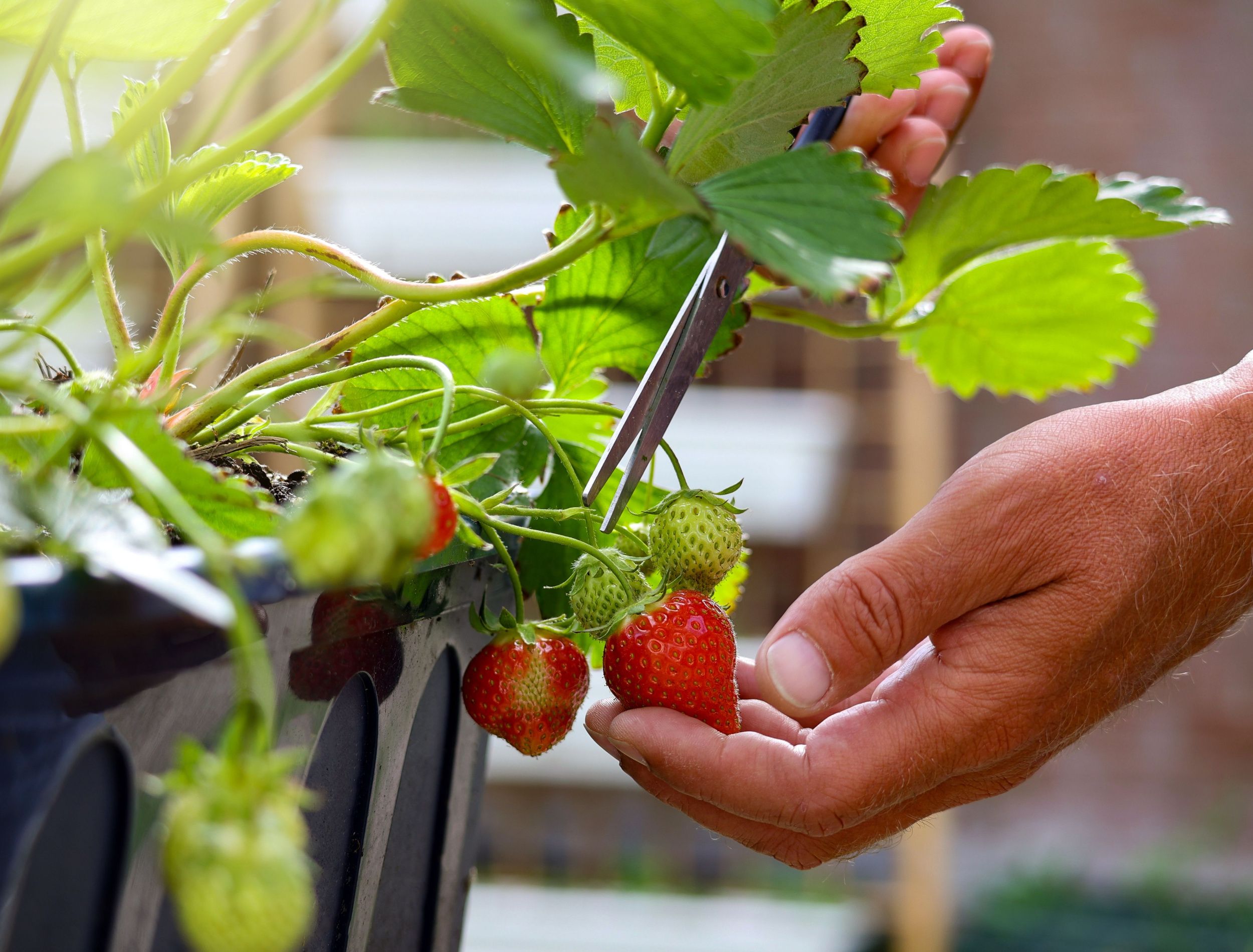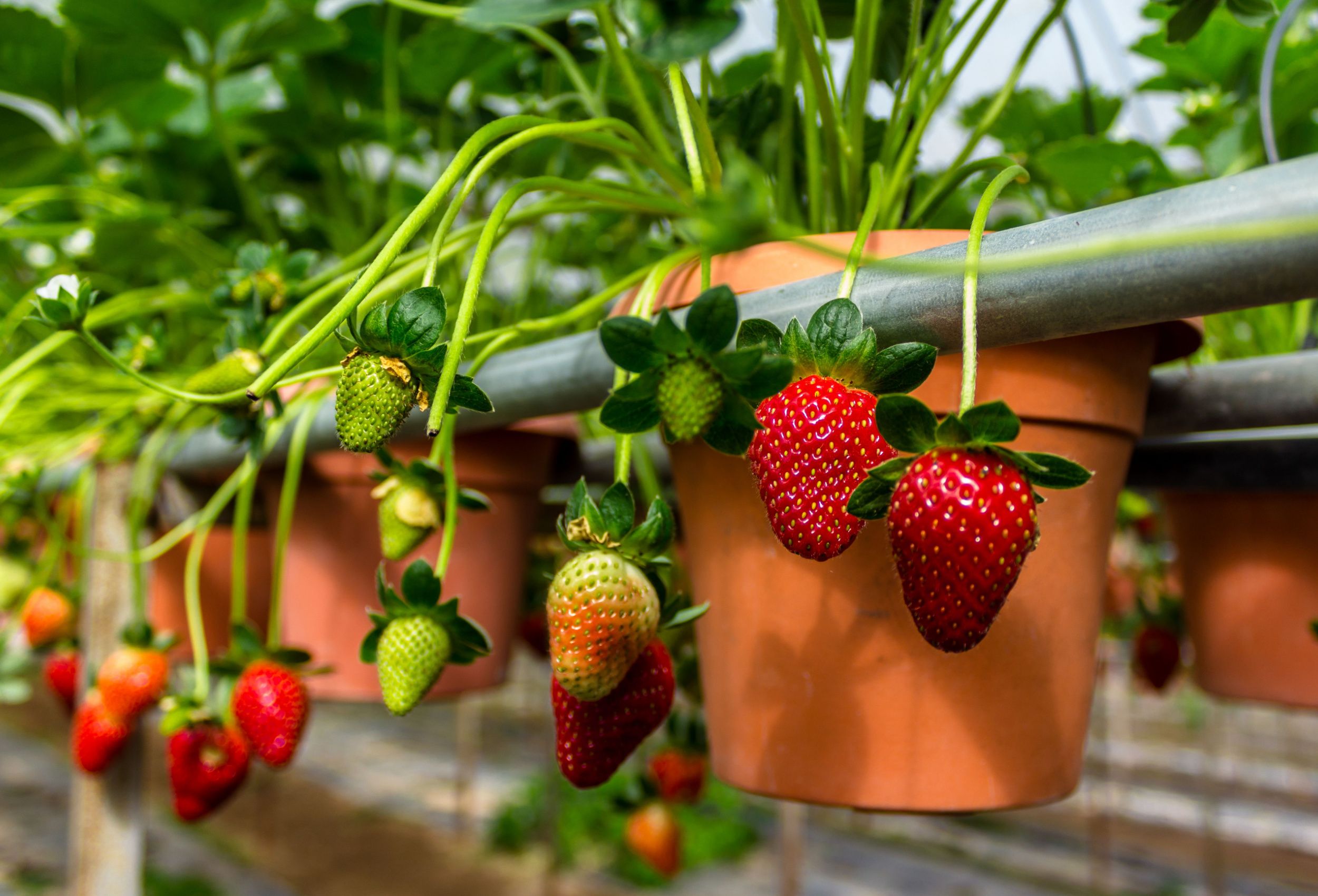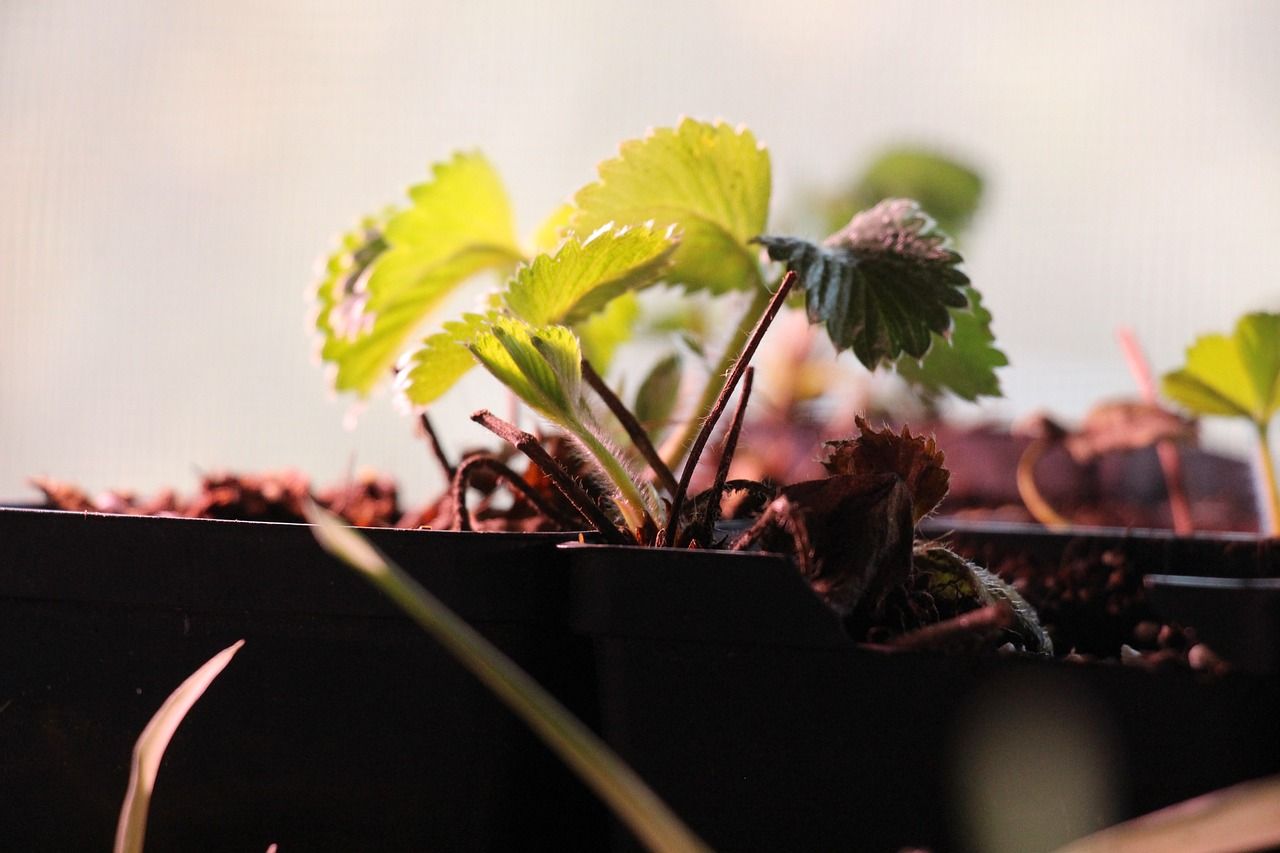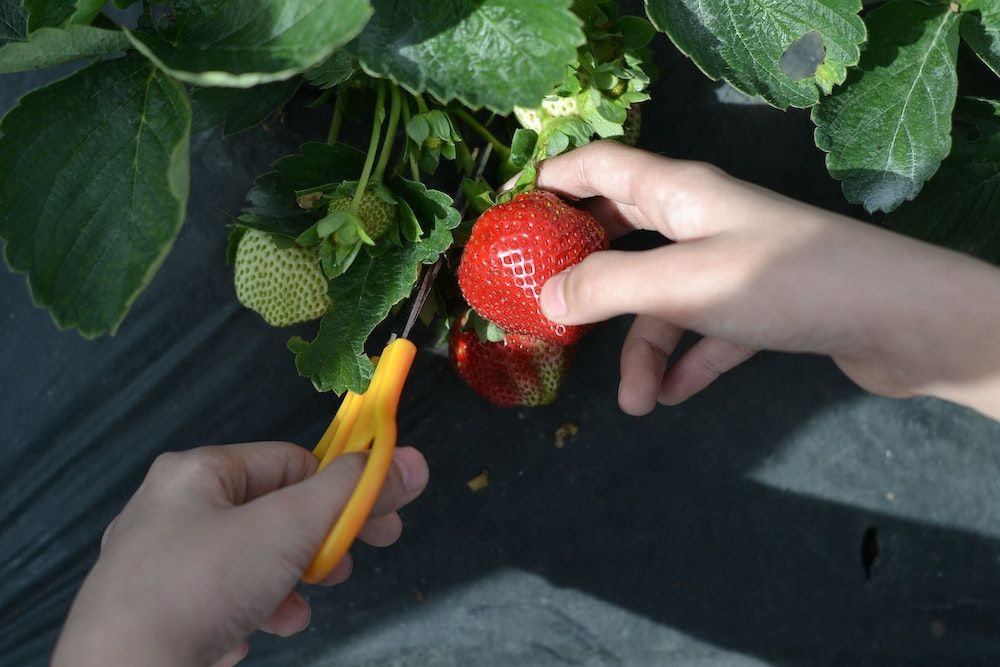Growing strawberries in pots is a fun, easy, and rewarding experience. These tiny, juicy fruits do not require much space to grow, which is why they're ideal for containers.
Moreover, who doesn't like a fresh harvest of these wholesome fruits to snack on or bake into delicious desserts? Learn why growing strawberries should be on your agenda for the upcoming growing season!
Materials Needed
Image credits: Gary Barnes via Pexels
Here is all you would need to grow strawberries in pots from seeds:
- Seeds or seedlings
- Seed tray
- Potting mix
- Container
- Watering can
- Fertilizer
- Cotton swab
Step 1 - Select the Variety
Image credits: LunarVogel via Shutterstock
When growing fruits in pots, you should select the varieties suitable for container planting. Fortunately, most strawberry varieties thrive in pots. These include June-bearing, ever-bearing, day-neutral, and alpine varieties.
As the name suggests, June-bearing strawberries ripen in June or early summer and are the largest among other varieties. The plant produces all its yield over two to three weeks and leaves you with a bountiful harvest.
The ever-bearing variety produces fruits twice (occasionally thrice) per year, once in the spring and the other in late summer or fall. These strawberries are smaller yet brimming with flavor and aroma.
The unique day-neutral variety is not sensitive to day length. It produces flowers and fruit whenever the temperature is moderate, between 35 to 85 degrees Fahrenheit. It has a longer harvest season and can even grow fruits in October if the temperature is mild.
Finally, the alpine variety is a shade-loving plant and yields small, sweet, aromatic fruits. It can also tolerate cooler temperatures and requires minimal care. While you can grow them in containers, the other varieties are much better options due to the larger fruit.
Step 2 - Choose the Container
Image credits: Kindel Media via Pexels
Strawberries are pretty plants that look fantastic growing in planters. You can grow them in rustic troughs or classic strawberry towers, with one plant per pocket. You can even display the trailing nature of the plant in hanging baskets.
Since these plants are shallow-rooted, you should use shallow containers. Choose the pot's diameter according to the number of plants you want to grow per container. A 6 to 8 inches pot is enough for a single plant, while a 12 to 14 inches container can accommodate up to three plants.
Use plastic pots instead of terracotta ones since they keep the soil moist for longer than terracotta containers. If you find the plastic containers unsightly, tuck them away in any ornamental pot you choose.
Step 3 - Sow the Plant
Image credits: saideclg via Pixabay
You can grow strawberries from seeds or seedlings purchased from the local nursery. Growing them from seeds is comparatively more challenging and can take up to five to six months to produce fruits, while seedlings can yield them in about two months.
Growing From Seeds
The first order of business is to fill your seed tray with appropriate potting soil. Usually, a mixture comprising three parts of peat to one part of organic soil is ideal for starting strawberry seeds. Water the soil to moisten it uniformly, and scatter your seeds over the damp soil. Thinly dust the seeds with peat moss or some more soil.
Place the seeds in a well-lit room with at least six hours of direct sunlight, or use fluorescent light as a supplement. Keep the soil moist with regular watering. The seeds also require a temperature between 65 to 70 degrees Fahrenheit for germination, so keep the tray on a heating pad. Germination takes about two to three weeks.
When the seedlings are 1 to 2 inches tall, with two true leaves, you can transplant them into bigger pots.
Growing From Seedlings
Growing your strawberries from seedlings is pretty straightforward. Fill your pot with a peat-free, all-purpose, well-draining mix. Add a fertilizer with slightly more potassium and less nitrogen to enrich the soil.
Gently remove the small plant from its container and place it in a hole dug into the soil. Keep the plant's crown (where the roots and shoots meet) slightly above the soil level and press down firmly. Leave at least an inch of space in the pot on the top for watering and mulching.
Add straw mulch to lift the foliage and fruits above the potting mix and create a barrier between the damp soil and strawberries to prevent rotting. Finally, water the plant to moisten the soil.
Step 4 - Take Care of the Plant
Image credits: Fotoindy via Canva
Take the following measure to ensure fresh, healthy strawberries.
Water
Strawberries do best with regular watering to keep the soil moist. Moreover, soil in smaller pots is also prone to drying out very quickly, so you may have to water your plant one to two times per day in summer.
Light
The plant needs plenty of light to grow flowers and fruits. Ideally, expose your strawberry plant to a minimum of six hours of direct sunlight daily. You can also supplement the lack of light in your home by placing it under artificial light for 12 hours per day.
Feeding
Feed the plant with organic fertilizer about once a month. Once flowers appear, fertilize them more regularly, about once fortnightly, using a liquid fertilizer, such as one suitable for tomatoes.
Pollination
If you keep your strawberries indoors, you will have to hand-pollinate the flowers. Every few days, use a cotton swab to move the pollen to the pistils of the flowers.
Step 5 - Harvest the Fresh Yield
Image credits: Martin Cheung via Pexels
Harvest your strawberries soon after they turn red all over. Snip the stem above the fruit to remove it from the plant instead of plucking it. Since strawberries are delicate fruits, use gentle hands, or they will bruise. Eat them immediately to enjoy the juicy freshness, store them, or use them for cooking or baking.
Strawberry Shortcake, Anyone?
Strawberries are a terrific fruit loved by both adults and kids. They can also make most novice gardeners feel accomplished with their bountiful harvest and mouthwatering flavors. So, this summer, consider adding strawberries to your "fruits to grow" list and share below in the comments how your efforts fared!







